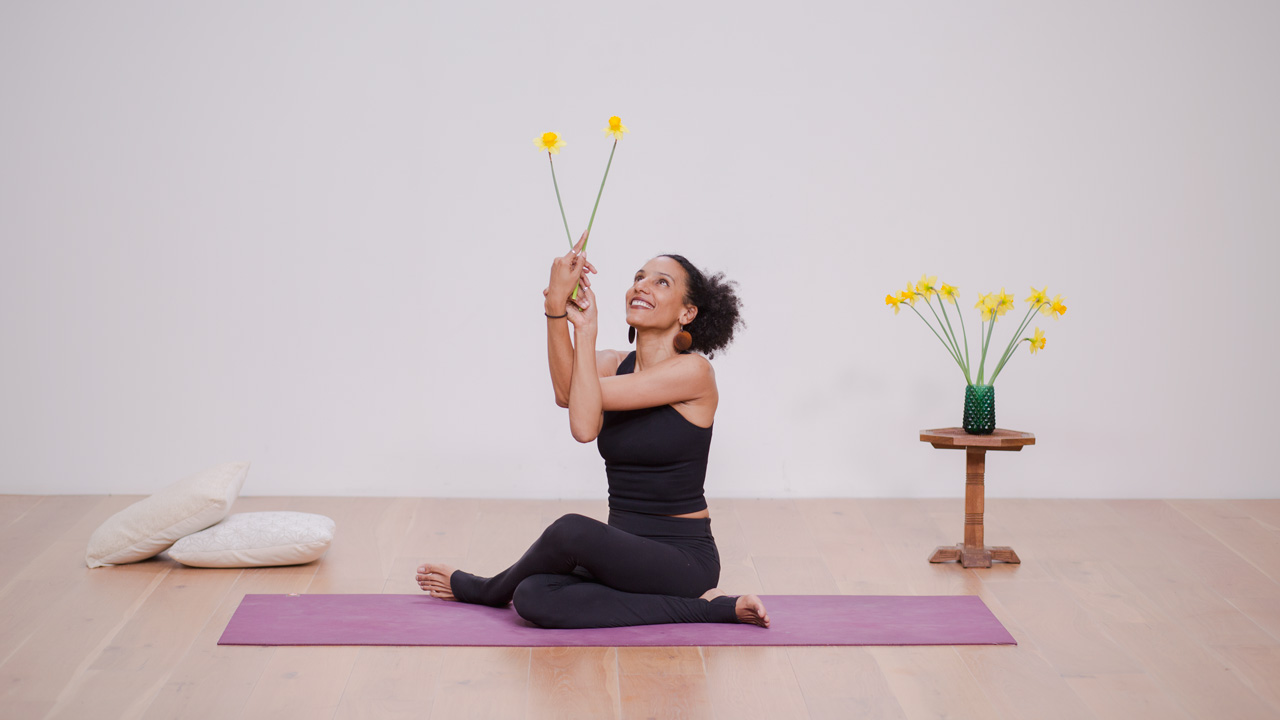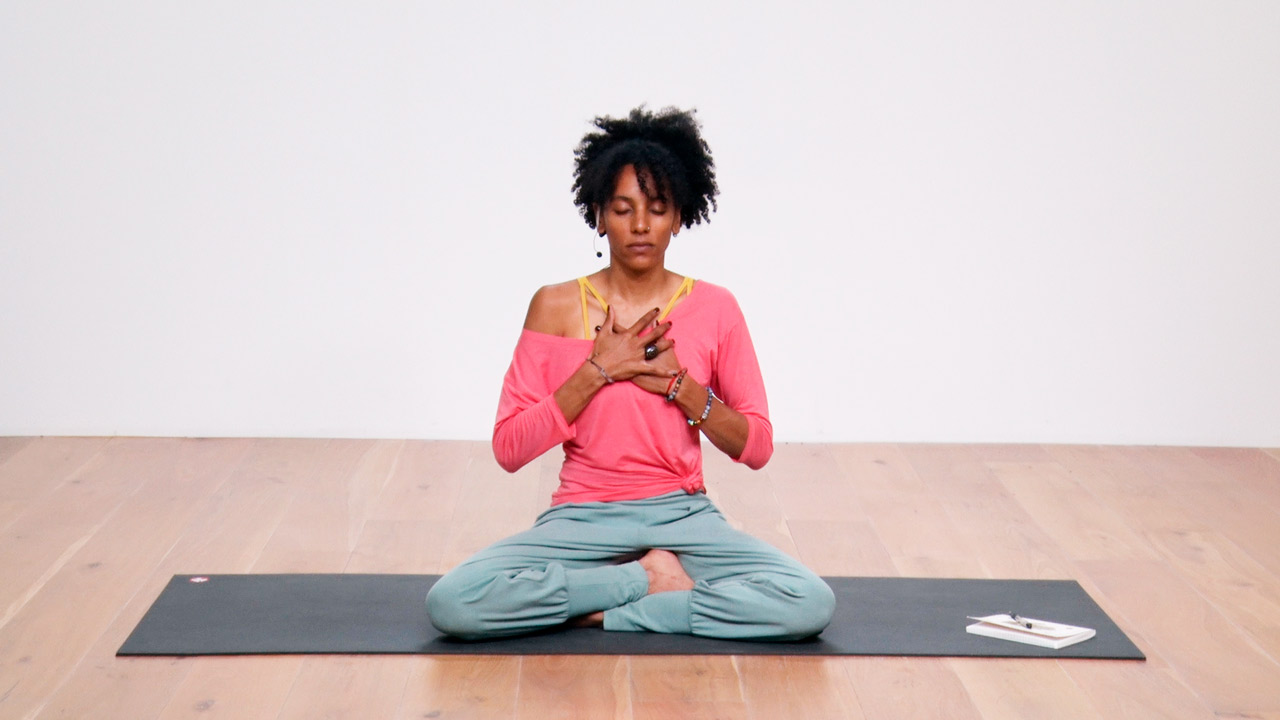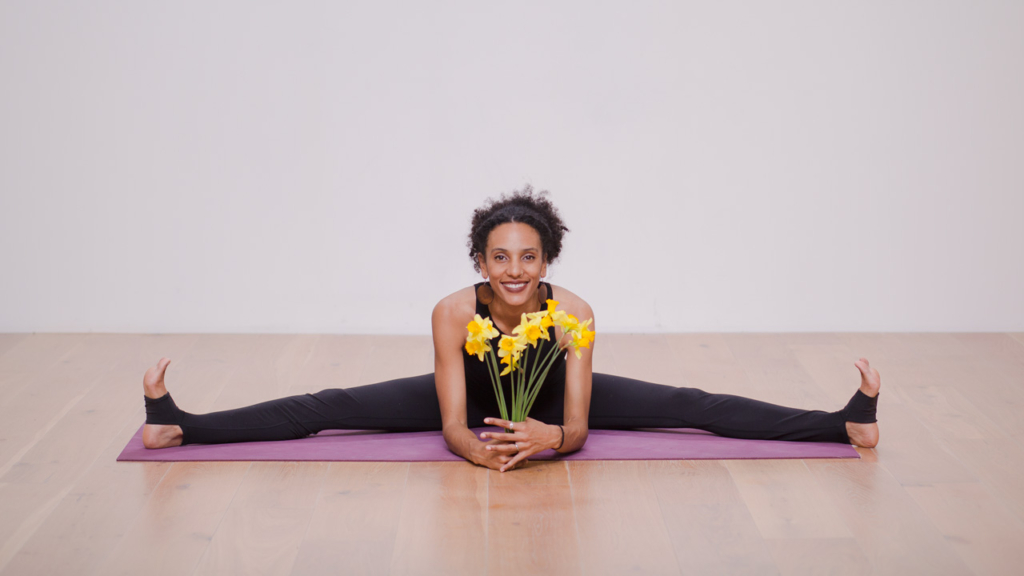One of the conversations I often have with yoga teachers and practitioners alike is how to maintain a personal yoga practice that adapts to their busy lifestyles. While you may grapple with long daily to-do lists and commitments that devour your time, integrating yoga into your daily routine – though seemingly impossible – can profoundly transform your life. In this article, I’ll be discussing this routine or Sadhana and offer some suggestions about how you may create – and sustain – your own.
What is Sādhana?
My first encounter with the idea of Sādhana was during my first 200-hour Yoga Teacher Training.
Sādhana is the regular, systematic effort to cultivate and refine your mind, body, and soul through various practices, such as asana (physical postures), pranayama (breathing exercises), concentration, meditation, ethical behavior, and self-discipline.
During the first week of training, our mentor, Claire, invited the trainees to design and commit to a spiritual daily practice for the entirety of the Teacher Training. Needless to say, I panicked a little. How on Earth was I going to practice yoga, not only on my own but every day, beyond the training hours and the classes I already attended at the studio? Part of me was convinced I would fail.
Thanks to the encouragement, guidance, and support of my mentor and peers, I created and sustained my daily ritual throughout the training, and I have been able to maintain some form of daily spiritual practice for close to a decade.
Understanding Sādhana
Sādhana is the daily practice or discipline undertaken by a person to attain spiritual growth, self-realization, and liberation. Sādhana is uniquely tailored for each of us, to foster alignment and balance within our own life, and to help us show up in the world as our true and authentic self.
The Yoga Sutras of Patanjali mentions ‘Sādhana’ in the second chapter, the Sādhana Pada. This chapter is about the practice of yoga and the steps that you can take to achieve Samadhi, or union with the divine.
B. K. S. Iyengar (1993: p. 22), in his English translation of the Yoga Sutras of Patanjali, defines Sādhana:
“Sādhana is a discipline undertaken in the pursuit of a goal. Abhyāsa is a repeated practice performed with observation and reflection. Kriyā, or action, also implies perfect execution with study and investigation. Therefore, sādhana, abhyāsa, and kriyā all mean one and the same thing.”
Being intentional
Creating a personalized daily spiritual practice for yourself can be as complex or as simple as you wish; what matters most is your intention. Intentionality, or ‘Sankalpa’ in Sanskrit, is the resolve or intention that is set to guide your thoughts and actions. Showing up erratically on your yoga mat and randomly choosing a yoga class on YouTube may work for some, but it may not feel very aligned in the long run. I have done it before, and what tends to happen is that sooner or later I will find a reason, challenge, obstacle, or excuse to skip a couple of days or drop the ritual altogether.
Every time you want to start a new Sādhana, I recommend sitting down and thoughtfully considering why you want to practice in the first place so that you can curate a routine that serves that intention. Journal about your current life situation and what aspects you wish to transform or improve. Consider your long-term goals, both in your yoga practice and life. Explore the values and virtues you want to cultivate through your practice: what could you use more of or less of in your life? Maybe it is calm you seek, or motivation, or courage.
Write down a clear and concise Sankalpa statement that resonates with you:
- I am calm
- I have the courage to show up daily
- I embody balance in all aspects of my life.
It can look like a mantra or affirmation, a word, or something else.
Now start to bring this Sankalpa into your daily life: can you align your thoughts, words, and actions with it beyond the time you spend on your mat?
How to set your intention? Try this!
This is a short journalling session to help you set intentions for the day, followed by pranayama and a grounding meditation to help you centre yourself and prepare for the day ahead.
How to create your Sadhana
“Regular practice teaches us to stay present in every moment, even when we are challenged by external circumstances.” – T.K.V. Desikachar
It is easy to get on your mat if you’re at a week-long yoga retreat in Bali, where all you have to do is attend the activities curated for you, giving you space to feel aligned and show up more fully. But what happens when you want to create a daily yoga routine that you can sustain on your own, beyond the container of formal yoga spaces? What about when you’re not feeling well, physically or emotionally, and the funky yoga sequence you had chosen for the next 30 days no longer resonates with your needs?
More than just asana
When I first got diagnosed with a chronic condition, I was 26 years old and up until then, I had been a healthy elite athlete. In just a few months, I went from being able to move through a Power Vinyasa class with relative ease, to not being able to practice cobra pose without being in immense pain.
Thankfully, that was around the time of my Yoga Teacher Training, and I learned that a daily yoga practice was much more than postures on the mat and that it could be sustainable if I took the time and care to design it right. This personal challenge turned into the realization of the flexibility and adaptability of Sādhana, teaching me lessons that I carry into my teaching and practice today.
I learned that I don’t need to practice yoga postures daily for an hour and that meditation and breathwork are as valid of practice as physical movement because the point of it all is not to do yoga, but to get to know yourself.
I learned that I don’t need to practice yoga postures daily for an hour and that meditation and breathwork are as valid as physical movement because the point of it all is not to do yoga, but to get to know yourself.
Making a commitment
Traditionally, Sādhana is practiced for 40 days and must include certain elements, but I would encourage you to design a practice that works for you and your lifestyle. Committing to a 40-day routine only to find it interrupted by unforeseen events like a trip can be disheartening. Instead, setting a realistic time frame – whether 10, 30, or 40 days – helps align your practice with your actual lifestyle, setting you up for success rather than disappointment. Make it work for you!
The same goes for the space, make sure you have a designated place to do your Sādhana where distractions and interruptions will be minimal, helping you set the stage for your daily yoga habit.
Choose your practice
So now you know why you want to have a daily yoga routine, for how long, and where you’ll be practicing. But what will you actually do?
If you’re new to yoga or feel like you lack the knowledge or inspiration to create your own routine, you can choose a sequence from the EkhartYoga class library that aligns with your Sankalpa and utilize it for the duration of your Sādhana. If you want to get creative, get your journal back out, and ask yourself what yoga postures, breathwork, meditation, and other self-care and wellness practices you want to include in your routine, given the time and space you have. Will you only do asana, and if so which ones and why? Will you also include other elements to help you embody your Sankalpa even more?
Be realistic
Choosing the right sequence, breathwork technique, meditation, or even book to read, can really support your intention and help you stick to your Sādhana, but also remember to stay flexible and adaptable. Make sure to ask a qualified yoga teacher if you have any questions or need help.
If at any point the practice you choose doesn’t feel aligned or no longer works for you, you can choose to change it up, adapt it, or drop it, but notice if it is just resistance, which could be part of the growth.
Allow it to evolve
Sādhana requires intentionality and quiet resilience.
It doesn’t matter if you dedicate 10 days to the daily routine or the traditional 40; if you commit to 20 minutes of journaling and Sun Salutations every morning or to 45 minutes of restorative yoga every night. The key is staying intentional and consistent, and remaining kind and compassionate with yourself no matter what.
Allow your daily yoga routine to evolve with your lifestyle, and let the discipline of Sādhana guide you to deeper self-awareness and peace. Start where you are, use what you have, and do what you can.
Allow your daily yoga routine to evolve with your lifestyle, and let the discipline of Sādhana guide you to deeper self-awareness and peace. Start where you are, use what you have, and do what you can.
Your journey into Sādhana is your own – unique, personal, and full of potential.
Check out my Academy course – Sādhana: Daily Habits to Create Balance
If you are ready to deepen your practice, consider joining my new course on the EkhartYoga Academy: ‘Sādhana: Daily Habits to Create Balance,’ designed to help you establish and maintain your personal practice.



